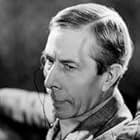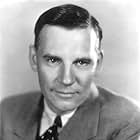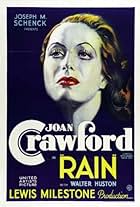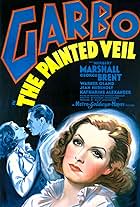A team of international scientists and engineers attempts to build a tunnel under the ocean.A team of international scientists and engineers attempts to build a tunnel under the ocean.A team of international scientists and engineers attempts to build a tunnel under the ocean.
George Arliss
- Prime Minister of Great Britain
- (as Mr. George Arliss)
Walter Huston
- President of the United States
- (as Mr. Walter Huston)
James Carew
- Jim Barton
- (uncredited)
Pat Fitzpatrick
- Geoffrey - As a young child
- (uncredited)
Jacqueline Giovanni
- Young Girl
- (uncredited)
Helen Haye
- Oil Magnate
- (uncredited)
Bryan Herbert
- American Reporter
- (uncredited)
Dennis Hoey
- Worker
- (uncredited)
Storyline
Did you know
- TriviaOne of the plot elements that crops up in the movie is a volcanic area that the tunnelers run into about halfway across the Atlantic. This makes sense, as the Mid-Atlantic Ridge is a very active area. The neat part in relation to the movie is that while the existence of a "Ridge" on the seafloor was known at the time, it was not known that it was so active. It wasn't until the Heezen/Ewing/Tharp mapping of the ocean floor in the 1950s that people discovered that Seismic activity and "Seafloor Spreading" due to magma seepage were going on. That was about 20 years after the makers of the film surmised Magma pockets near the Mid-Atlantic.
- GoofsAlthough the story takes place over a period of about twenty years, none of the principal players shows any sign of aging, despite all the ordeals encountered.
- Quotes
Richard 'Mack' McAllan: There are bigger things than money.
Airways Magnate: We don't deal in 'em.
- Crazy creditsAt the end of the opening credits, a card comes up with "Gaumont-British Picture Corpn. Ltd. were fortunate in securing the services of Mr. George Arliss and Mr. Walter Huston for the parts of Prime Minister of Great Britain and President of the United States."
- ConnectionsEdited from Der Tunnel (1933)
Featured review
A team of international scientists and engineers attempts to build a tunnel under the ocean.
The story was written by the amazing Curt Siodmak, based on the 1913 novel "Der Tunnel" by Bernhard Kellermann. Interestingly, "Der Tunnel" had already been filmed three times before, once as a German silent, "Der Tunnel" (1915), and then as two sound films "Der Tunnel" (German) and "Le Tunnel" (French), both released in 1933, and both directed by Curtis Bernhardt. The British version today remains the only one easily available.
Suggestions for such a structure actually go back to Michel Verne, son of Jules Verne, who wrote about it in 1888 in a story entitled "Un Express de l'avenir" (An Express of the Future). This story was published in English in Strand Magazine in 1895. As recently as the 1960s, the idea was again proposed, but then using vacuum tubes rather than more traditional modes of transport.
As for the film, it is worth seeing, if for no other reason than to get a feel for British science fiction in the 1930s. This approach seems much different than the boomin science fiction of the 1950s.
The story was written by the amazing Curt Siodmak, based on the 1913 novel "Der Tunnel" by Bernhard Kellermann. Interestingly, "Der Tunnel" had already been filmed three times before, once as a German silent, "Der Tunnel" (1915), and then as two sound films "Der Tunnel" (German) and "Le Tunnel" (French), both released in 1933, and both directed by Curtis Bernhardt. The British version today remains the only one easily available.
Suggestions for such a structure actually go back to Michel Verne, son of Jules Verne, who wrote about it in 1888 in a story entitled "Un Express de l'avenir" (An Express of the Future). This story was published in English in Strand Magazine in 1895. As recently as the 1960s, the idea was again proposed, but then using vacuum tubes rather than more traditional modes of transport.
As for the film, it is worth seeing, if for no other reason than to get a feel for British science fiction in the 1930s. This approach seems much different than the boomin science fiction of the 1950s.
Details
- Runtime1 hour 34 minutes
- Color
- Aspect ratio
- 1.37 : 1
Contribute to this page
Suggest an edit or add missing content





































